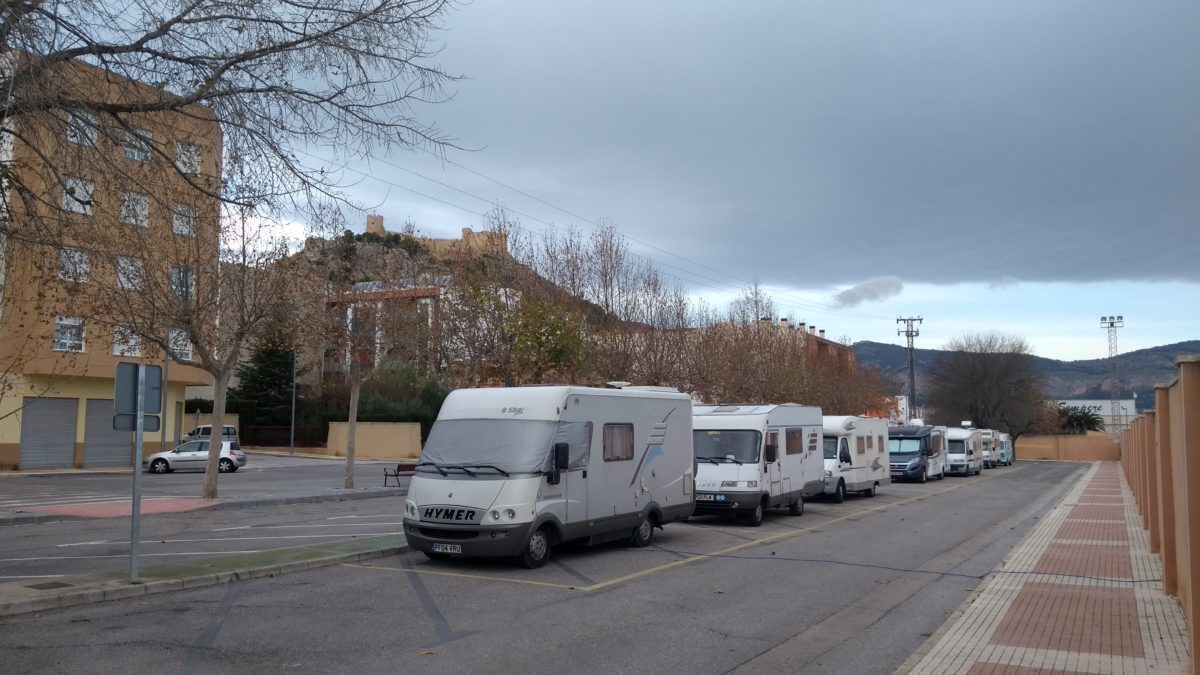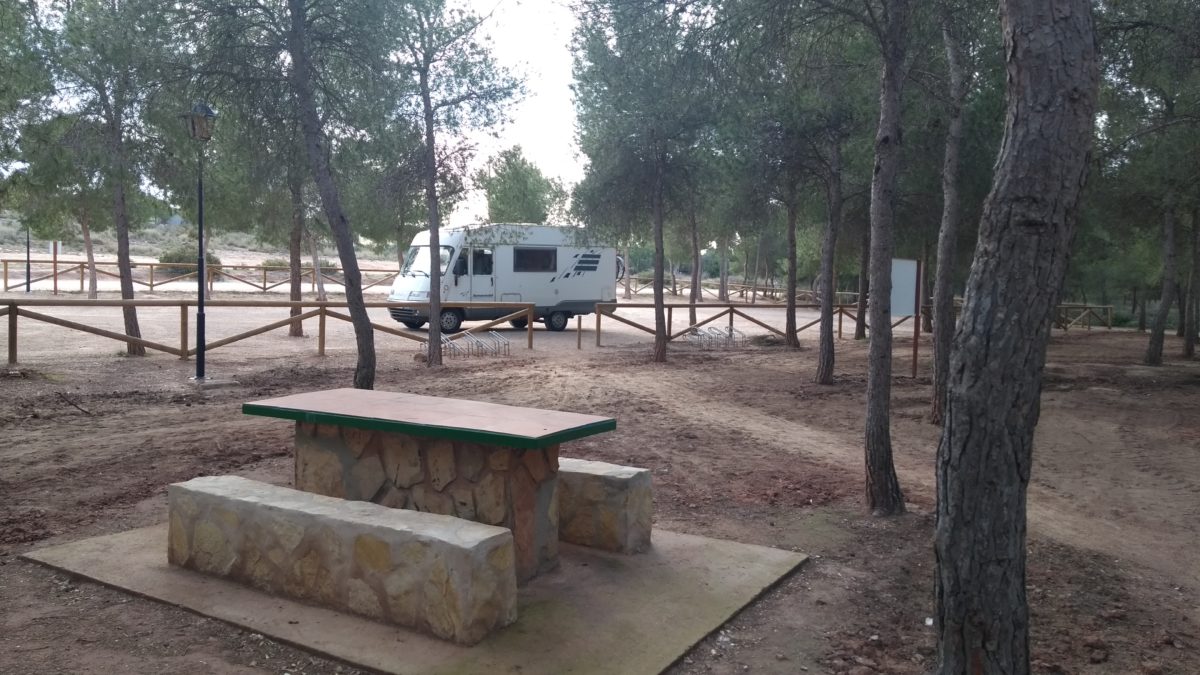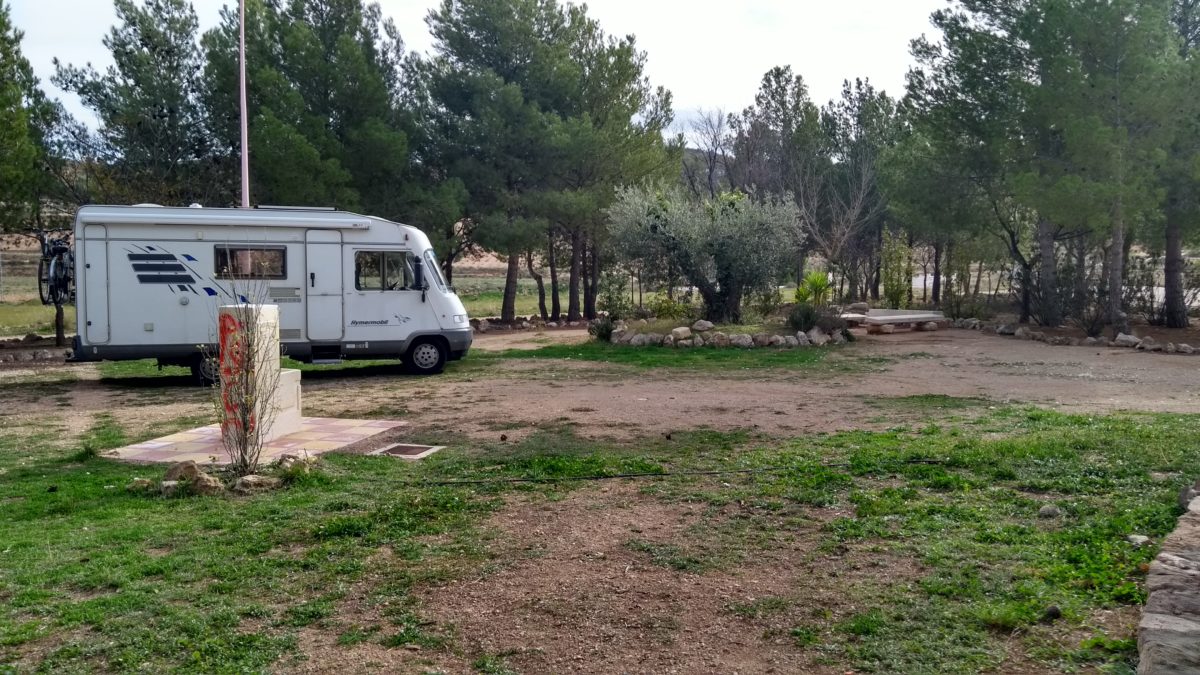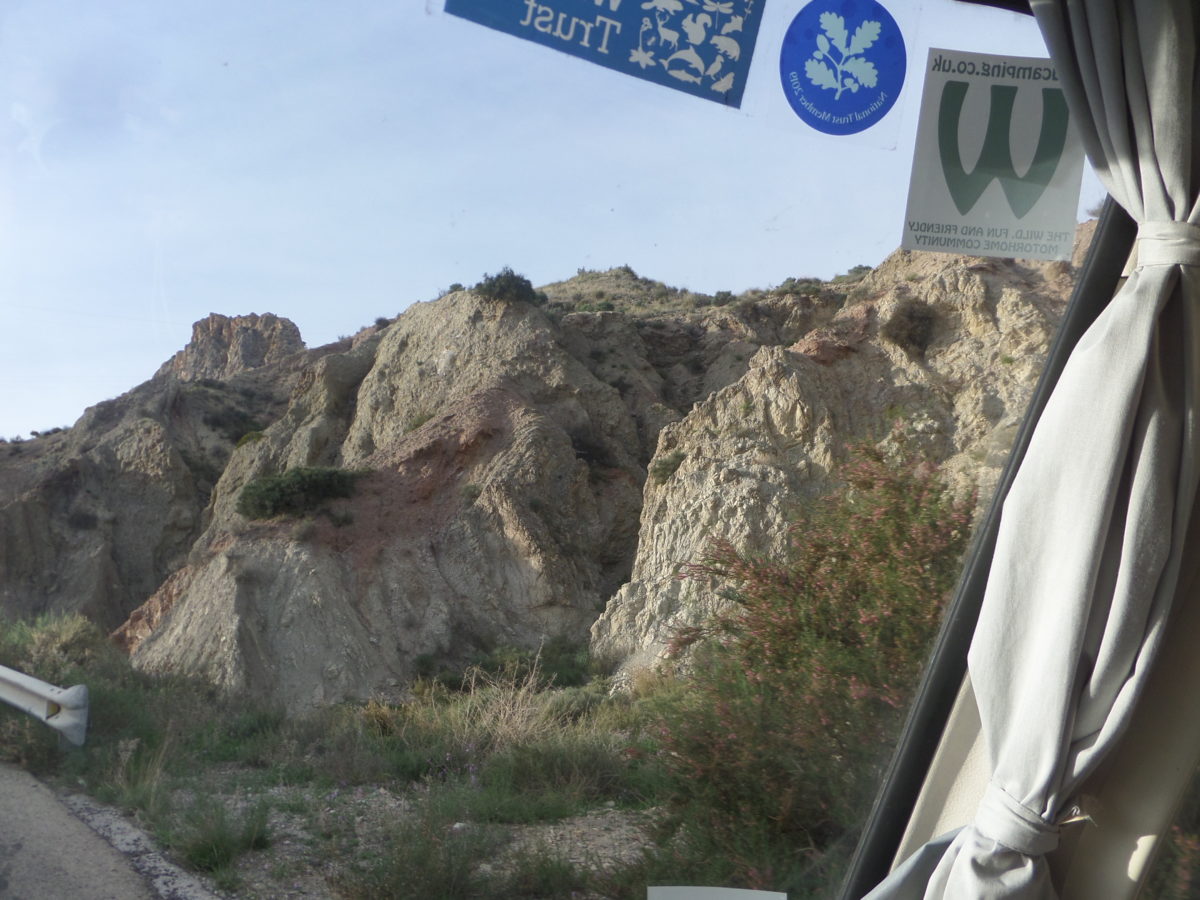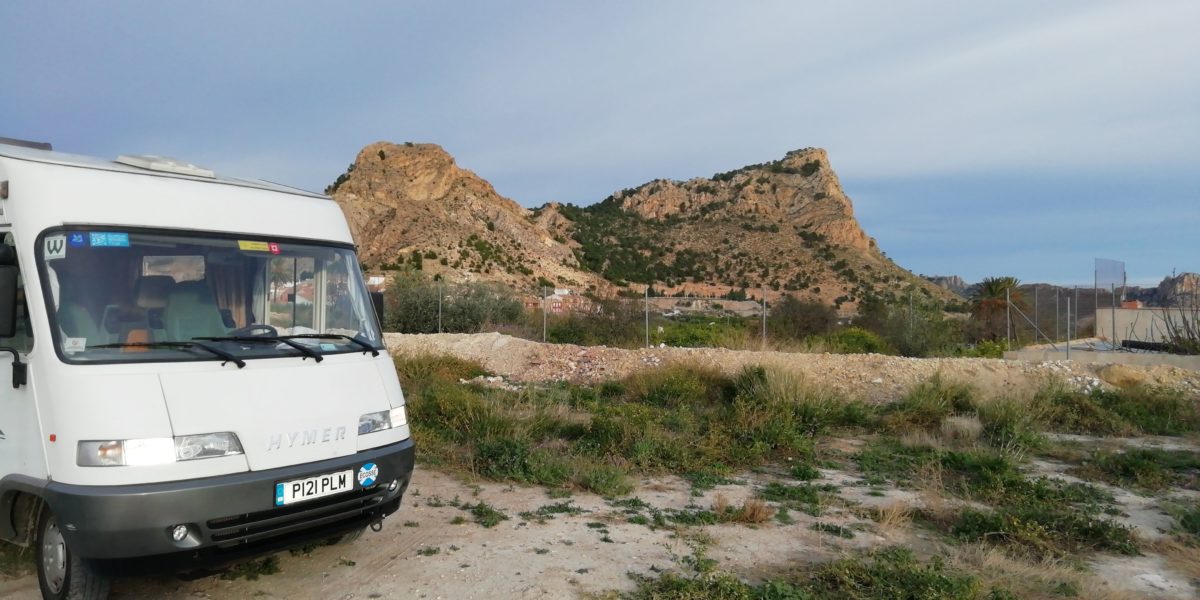Some of the best village ramparts in France
On the road again. The weather has turned cooler with some cloud and quite a strong wind. Last night the temperature in Castalla went down to around 5c but we had been forwarned and I fitted Bertie’s windy warmer which is a padded screen that goes around the outside the windscreen and the front side windows. This does help quite a bit to keep the heat in and if we pull the front curtains too that provides another layer. Still definitely a porridge morning! Much too cold and windy to go walking in the town so we moved off in good time. I had planned a longish journey today so I picked a couple of picnic areas in Park4Night as coffee and lunch stops.
This means that we end up on some smaller roads finding our way to these places just off the main roads and that is quite fun in itself. Our first stop was at El Plano nature reserve just outside Sax. The parking area was fine but the main facilities were all shut up for the winter but this is clearly a popular place in the summer with lots of tables and benches, BBQs, water points, toilets and a kiosk. I am not sure what the site was all about but the area was indeed very flat but quite high up in the mountains.
When we left here we drove for some miles along minor roads through hundreds of acres of recently planted trees. I think many of them were almonds.
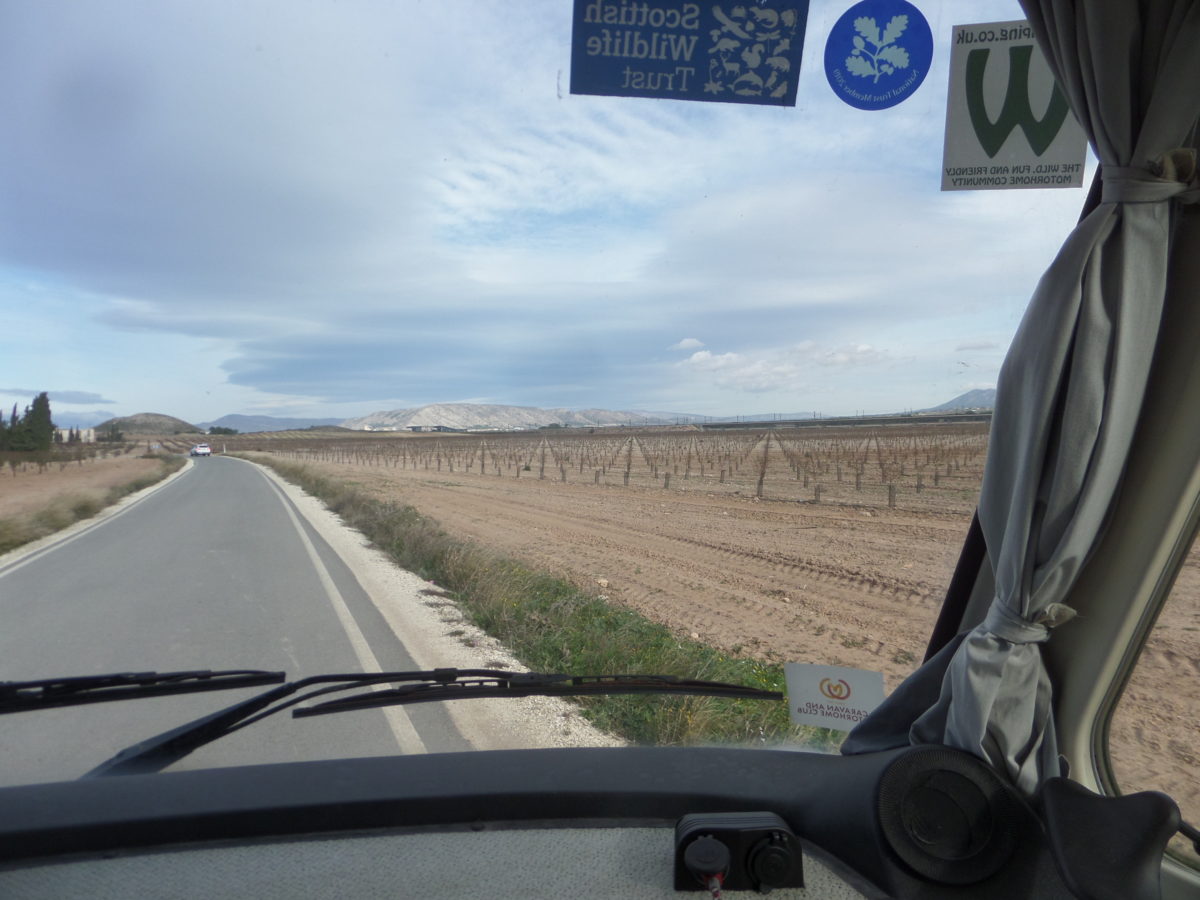
Actually on that subject I think I misled you yesterday and I now suspect that the “dead olive” trees we were seeing were actually almond trees that had lost their leaves. We saw lots of these “dead” trees close up on this road and it was clear that these were not olives at all. We passed a larger almond tree right beside the road – we know it was an almond as Eileen lent out of her window and picked one! After this we noticed quite a few almond trees planted amongst the olives.
Today has been a journey through fruit trees – many thousands of acres of all kinds of trees and bushes as well as lots of vines too. Castalla was quite high (around 700m) and the most of the areas we drove through are that high too. We drove over the Puerto de Jumilla at 810m at one point and it was not a big climb up to get to the top so the whole area must be quite high. I have no idea what most of the crops were, we could see vines and olive trees but they were in the minority. Although we drove along roads with signs telling us to look out for cattle we saw none at all. We did see one flock of goats and two flocks of sheep otherwise nothing but orchards, vineyards and olive groves. Later as we got closer to Murcia and dropped down nearer the coast the orange groves and date palms returned.
On that subject there was a major and sudden change in scenery at Blanca where we turned off the motorway on to the minor road to get to Ricote. With in a mile we were in a completely different landscape, much drier and the land around us deeply etched by water. It looked like mud and shale and reminded me of pictures I have seen of the Dakota Badlands – the land surface clear of all vegetation and deeply scored. The valley bottoms are lush and full of orange trees, lemon trees and date palms.
Our stopover place tonight is a free municipal aire on the edge of the little town of Ricote in the hills 20 miles north west of Murcia. We are parked on the edge of the site with a view down through the mountains toward the sea at Torrevieja the otherside of Murcia. The wind is still blowing and it is only 12c which is much warmer that Castalla but then we are a good 1000 feet lower and nearer to the sea.
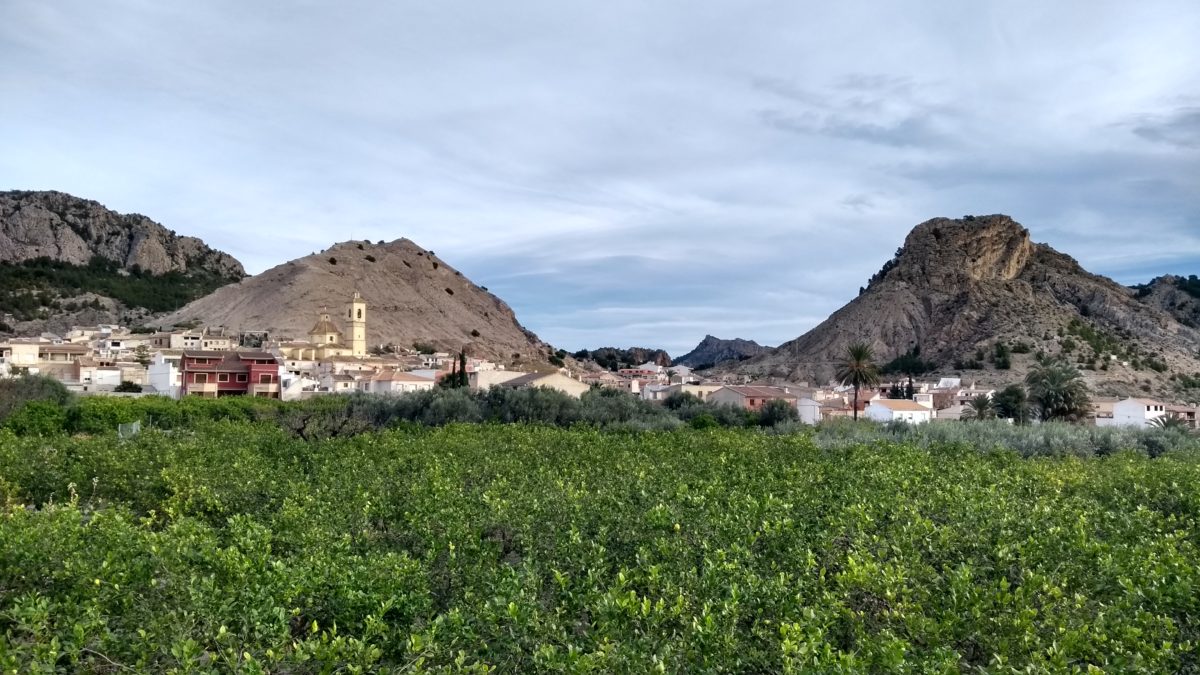
Tomorrow we will return to the seaside and have another few days break from driving whilst we think about our plans for the rest of December.















